Pyrrhulomyces E.J. Tian & Matheny, gen. nov.
Index Fungorum number: MB 835046; Facesoffungi number: FoF
Type: Agaricus astragalinus Fr.
Etymology: Pyrrhulomyces (Greek, masculine), refer- ring to the similar coloration exhibited by the Eurasian bullfinch (Pyrrhula pyrrhula), a bird species.
Description: Basidiomata agaricoid, pileus viscid to glutinous with an orange tint and bitter taste, exuding yellow pigment in weak alkali solution, pileus context and stipe blackening where cut or bruised. Basidiospores smooth under typical light microscopy or finely punctulate depending on optic quality but with distinct rugulose ornamentation under scanning electron micro- scope (SEM); ovate, elliptic to oblong, rarely pyriform in face view, subamygdaliform to elliptic in profile (not bean-shaped), without a germ pore, yellowish brown to cinnamon in KOH, nondextrinoid, brown in deposit. Pleurocystidia as chrysocystidia, fusiform-ventricose to clavate or clavate-mucronate, wall thin or slightly thick- ened, smooth, with golden refractive inclusion or golden ochraceous throughout. Cheilocystidia narrow and
elongated, widened at the base with a long cylindric neck ending in an obtuse to subacute apex, at times filamen- tous, chrysocystidia rare on lamellar edge. Pileipellis an ixocutis. Acanthocytes and astrocystidia absent. Lignicolous, primarily on conifer wood (rotting stumps and logs).
Known distribution: Europe, Asia, North America.
Species: Pyrrhulomyces astragalinus, Py. amariceps.
Notes: – Pyrrhulomyces formed a separate clade apart from Pholiota and is more closely related to Hypholoma and Stropharia (FIGS. 1–3). The most distinctive fea- tures of this genus are the brightly colored pileus, bitter taste, blackening basidiomata, absence of a germ pore, presence of pleurochrysocystidia, and the peculiar shape of the cheilocystidia as noted by Smith and Hesler (1968). The gross morphological features and bitter taste were first observed by Fries (1821) for Agaricus astragalinus Fr. Smith and Hesler (1968) also noted that basidiomes of Pholiota astragalina were difficult to dry and that flesh mounted in weak alkali solution exuded a greenish yellow pigment in solution.
Pyrrhulomyces is similar to Stropharia and Hypholoma but differs from most species in these two genera by the brown spore deposit (not purplish brown), absence of an annulus, and absence of a germ pore (Singer 1986). Stropharia can also be distinguished from Pyrrhulomyces by the presence of acanthocytes (Farr 1980; Cortez and Silveira 2008).
Pyrrhulomyces astragalinus had been placed in its own stirps in Pholiota subg. Flammuloides in sect. Lubricae by Smith and Hesler (1968). Both Holec (2001) and Jacobsson (2012) placed P. astragalina in Pholiota subg. Pholiota, with Holec placing the species in sect. Subsiccae (J.E. Lange) ex Singer, the only European species in the section. Jacobsson (1991) placed P. astragalina in sect. Astragalinae Jacobsson of subg. Pholiota, whereas Singer (1986) put the species in sect. Subsiccae, subsect. Astragalinae Singer. As is evident from these treatments, earlier authors recognized the unique morphological attributes of P. astragalina. Thus, it is not so surprising the species has come to occupy an autonomous phylogenetic position distantly related to Pholiota.
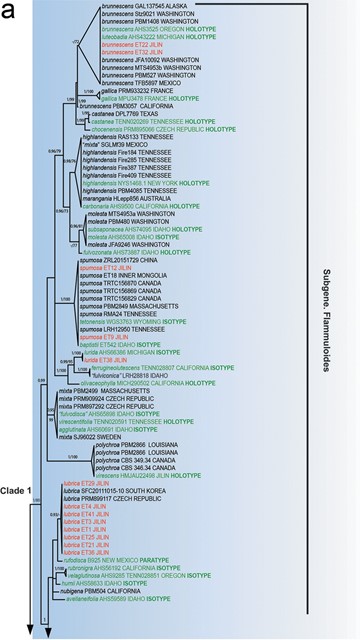
Figure 1. BI phylogram of Pholiota and allied genera based on data set 1 (ITS+28S+rpb2). PPs >0.90 and bootstrap values >70% are shown. Types are indicated in green, and specimen vouchers from China are in red.
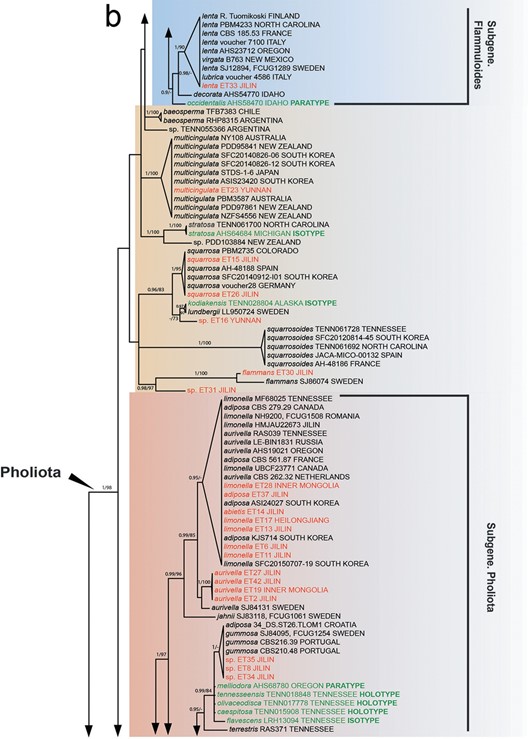
Figure 1. (continued.)
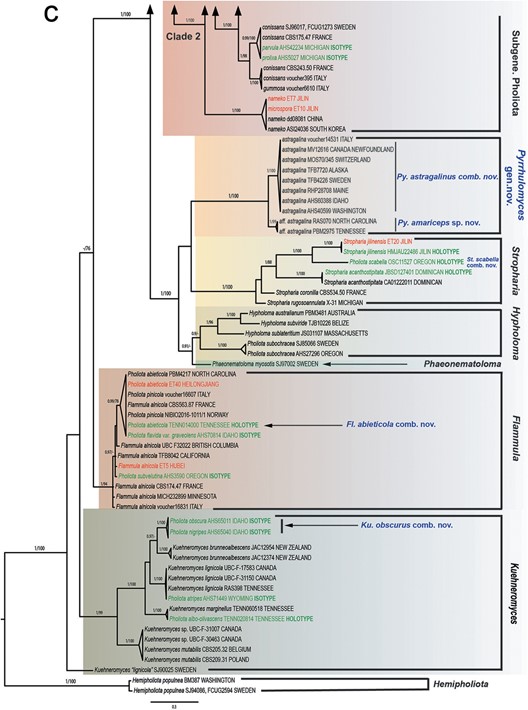
Figure 1. (continued.)
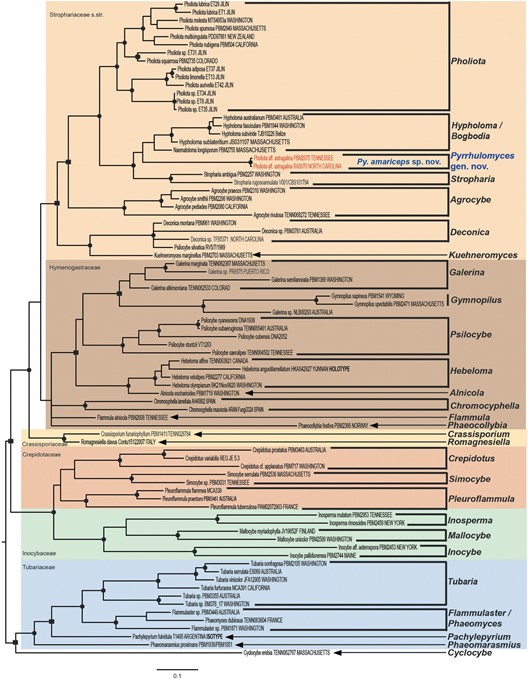
Figure 2. BI phylogram of Strophariaceae and other selected families of Agaricineae based on data set 2 (28S+18S+rpb2+tef1). Nodes with bootstrap values >70% and PPs >0.95 are indicated with black-filled circles. Nodes with bootstrap support <70% but PPs >0.95 are indicated with black-filled squares. Nodes with bootstrap support >70% but PPs <0.95 are indicated with black-filled hexagons.
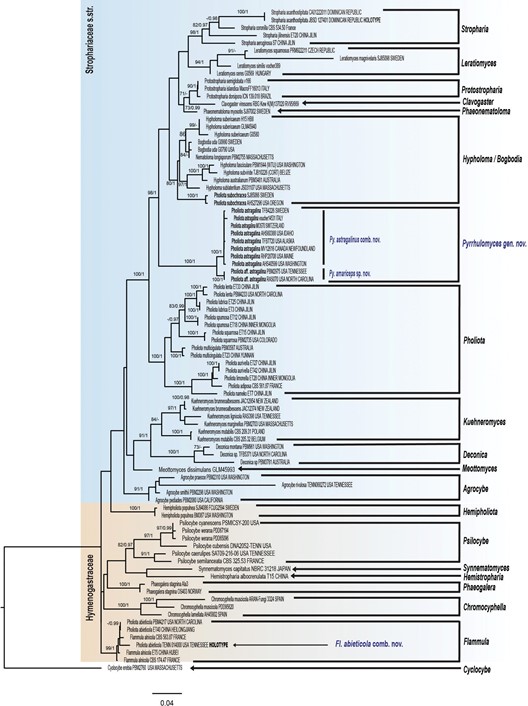
Figure 3. ML phylogram of genera of Strophariaceae and selected Hymenogastraceae inferred from data set 3 (ITS+28S). Bayesian PPs
>0.95 and bootstrap values >70% are shown.
Species
